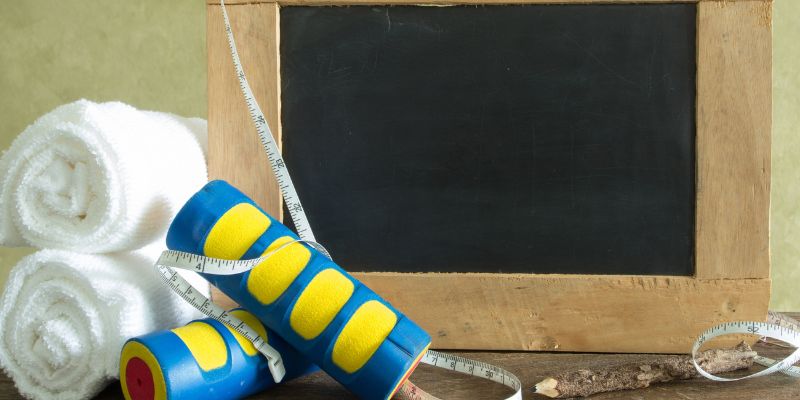Are you dealing with the effects of low blood pressure? It’s important to know that this condition can vary, from mild drops in your BP to severe, life-threatening hypotension. Understanding the fundamentals behind managing and controlling this health issue is critical for avoiding bad symptoms and complications—which is why we are here to provide you with information about a beneficial low-blood pressure diet.
To lifestyle changes and medical treatments prescribed by your healthcare provider, an appropriate dietary plan tailored for managing hypertension could make all the difference in successful outcomes. We’ll guide you through some of the basics needed for maintaining balanced blood levels and safe limits while utilizing food as a natural source of BP control.
Low Blood Pressure - What It Is and How To Detect It

Low blood pressure, technically referred to as hypotension, is a reading below 90/60 mmHg (millimeters of mercury). It’s normal for your BP to dip throughout the day, which can be caused by physical activity or stress. However, if you are consistently experiencing readings that are lower than what is considered healthy, it could indicate an underlying medical condition.
There are several methods your doctor may use to assess this issue, such as measuring heart rate, tracking episodes of dizziness or lightheadedness, doing tests on your reflexes, and performing an ultrasound. Knowing the cause of low BP helps doctors determine how best to treat it.
Benefits Of A Low Blood Pressure Diet

The foods we consume can significantly influence how our bodies regulate and manage body systems. A low blood pressure diet is rich in nutrients, vitamins, minerals, and other substances important to providing energy while maintaining balanced sodium and potassium levels.
- Eating foods high in fiber, like whole grains, fruits, and vegetables, can help slow the absorption of salt from your diet, which helps lower BP levels.
- Increasing your magnesium intake can also reduce hypotension as it helps support nerve and muscle function that maintains healthy blood flow.
- A balanced low-blood-pressure diet should include antioxidant-rich foods such as berries, spinach, and other dark leafy greens to counter oxidative stress (an imbalance between free radicals and antioxidants). This type of stress is linked to various health issues, including cardiovascular complications associated with hypertension.
- Drinking fluids throughout the day will help keep your body hydrated while flushing out excess sodium, contributing to higher readings on the BP chart.
- Consuming foods high in omega-3 fatty acids, such as salmon, sardines, and other fish, can help reduce hypertension-related inflammation.
- Replacing unhealthy saturated fats with healthy polyunsaturated and monounsaturated fats found in nuts and avocados has also been linked to natural BP regulation and maintenance.
- Limiting your intake of processed foods, sugars, and sodium is key for successfully managing low blood pressure through dietary means.
Ultimately, a well-rounded low blood pressure diet should include plenty of fresh fruits and vegetables, lean proteins (such as seafood), healthy sources of carbohydrates like whole grains and legumes, and an adequate amount of fluids per day (at least eight glasses). Working with a nutritionist or dietician can help you create an individualized plan tailored to your needs and lifestyle to provide the best possible results.
Keeping your blood pressure in check is important for overall health, so start setting up a meal plan today and ensure you are following it properly to achieve optimal results.
Foods to Eat for a Healthy and Balanced Low Blood Pressure Diet
A healthy, balanced low blood pressure diet should include plenty of fresh fruits and vegetables and complex carbohydrates such as oats, beans, legumes, whole wheat beebread paspastaating lean proteins like fish, chicken, or turkey is also beneficial for maintaining a healthy BP level. Other foods that can help to reduce hypotension include:
• Low-fat dairy products
• Nuts and seeds
• Olive oil
• Avocados
• Berries (especially blueberries)
• Dark leafy greens (kale, spinach, collards)
• Fermented foods (yogurt and kimchi)
• Whole grains (brown rice quinoa)
Drinking fluids, preferably water or herbal teas, throughout the day, is also important. Avoiding alcohol and sugary drinks can be beneficial as well.
Some supplements may help naturally reduce BP levels in those with low blood pressure. Magnesium, omega-3 fatty acids, coenzyme Q10 (CoQ10), and resveratrol are all known to have an anti-hypertensive effect on the body when taken regularly.
However, it is best to consult your doctor before taking any supplement and get their approval first.
Following these guidelines will help you maintain a healthy balanced diet that supports natural blood pressure regulation while avoiding any potential risks associated with unhealthy eating habits.
Foods to Avoid for a Low Blood Pressure Diet
Just as there are specific foods to include in a low blood pressure diet, certain types of food should be avoided. Processed and fast foods, fried foods, red meats, and refined sugars should all be limited or avoided entirely.
Eating too much salt can also lead to higher BP levels, so limiting salt intake is important for managing hypotension. Other foods to avoid include:
• Soda
• White bread and pasta
• Trans fats (margarine and other spreads)
• Canned soups or vegetables
• Alcohol
It is important to remember that while following a low blood pressure diet may help reduce readings on the BP chart, it is not always enough alone.
Getting Enough Sleep With a Low Blood Pressure Diet
Getting enough quality sleep is also important for managing low blood pressure. Poor sleeping habits can increase stress hormones contributing to higher BP levels. Aim for 7-9 hours of sleep per night, and keep a regular schedule as much as possible.
Exercising Regularly With Low Blood Pressure
Regular exercise is also key for maintaining healthy BP readings. Exercise helps the heart pump more efficiently, which increases blood flow throughout the body and helps regulate BP naturally.
Try incorporating 30 minutes of moderate physical activity into your daily routine, such as brisk walking or swimming.
Maintaining a healthy lifestyle by following a balanced low-blood-pressure diet, getting plenty of rest, and exercising regularly will help you maintain normal essential health levels and reduce your risk for other health complications. With dedication and commitment, you can succeed in reaching your healthier lifestyle goals.
FAQS
What are the signs of low blood pressure?
The signs of low blood pressure can vary from person to person, but some common symptoms include lightheadedness, dizziness, blurred vision, nausea, and fatigue.
Can stress cause low blood pressure?
Yes, stress can contribute to low blood pressure. When the body is under stress, it increases hormones such as cortisol which can constrict the arteries and reduce blood flow, leading to a drop in BP levels.
What foods increase BP?
Some foods that can increase BP levels include processed and fast foods, fried foods, red meats, and refined sugars. Salt should also be limited in the diet to avoid higher BP readings.
Conclusion
Eating for low blood pressure health can be achieved with some simple lifestyle modifications. The goal should be to avoid food high in fatty acids and salts and regular exercise. Choosing the right combination of fruits, vegetables, lean proteins, whole grains, and dairy is important to keep your blood pressure healthy. Monitor your caffeine intake and limit added sugars. If symptoms remain after making these changes, discussing any persistent problems with your doctor is important.







